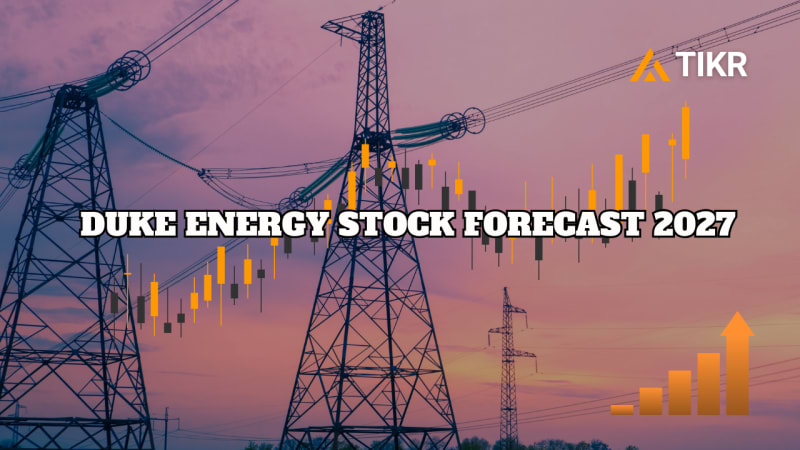Duke Energy Corporation (NYSE: DUK) continues to deliver stable performance as investors favor defensive, income-generating utilities. The stock trades near $129/share, close to its 52-week high, supported by steady earnings, cost control, and predictable cash flow from its regulated operations.
Recently, Duke filed its 2025 Carolinas Resource Plan to modernize the grid and add new clean energy resources, including battery storage, while also advancing solar buildouts in Florida through new site filings and project completions. Together, these moves reinforce a steady push on reliability and the energy transition.
This article explores where Wall Street analysts think Duke Energy could trade by 2027. We have gathered consensus targets and valuation model data from TIKR to outline the stock’s potential path based on current analyst expectations.
Unlock our Free Report: 5 AI compounders that analysts believe are undervalued and could deliver years of outperformance with accelerating AI adoption (Sign up for TIKR, it’s free) >>>
Analyst Price Targets Suggest Modest Upside
Duke Energy trades around $129/share today. The average analyst price target is $136/share, suggesting about 6% upside over the next year. Forecasts are relatively tight, which signals a stable but cautious outlook among analysts.
- High estimate: ~$143/share
- Low estimate: ~$121/share
- Median target: ~$137/share
- Ratings: 7 Buys, 2 Outperforms, 10 Holds
Analysts see modest upside, reflecting confidence in Duke’s steady operations but limited potential for major re-rating. The narrow range of forecasts implies most investors believe the stock already captures its near-term earnings potential.
For investors, Duke looks fairly priced for stability. The main appeal lies in its dependable dividends and defensive earnings base, not explosive growth. The stock could outperform slightly if power demand remains firm or if renewable investments deliver higher returns than expected.

See analysts’ growth forecasts and price targets for Duke Energy (It’s free!) >>>
Duke Energy: Growth Outlook and Valuation
Duke’s financial profile remains solid, supported by its regulated utility model and disciplined capital spending.
- Revenue is projected to grow roughly 4% per year through 2027.
- Operating margins are expected to hold near 29%.
- Shares trade at about 18x forward earnings, close to historical norms.
- Based on analysts’ average estimates, TIKR’s Guided Valuation Model using a 17.6x forward P/E points to around $137/share by 2027.
- That implies about 6% total upside, or 3% annualized returns.
The numbers suggest Duke is positioned for slow but steady compounding. Most of its total return will likely come from its 3.4% dividend yield, which provides consistent income while investors wait for incremental growth.
For investors, Duke offers reliability over excitement. For income-focused portfolios, it remains one of the most dependable utility names, balancing solid dividends with a resilient earnings outlook.

Value stocks like Duke Energy in as little as 60 seconds with TIKR (It’s free) >>>
What’s Driving the Optimism?
Duke’s regulated utility model provides stability and visibility that most investors value during uncertain markets. Its ongoing investments in solar, battery storage, and grid modernization are expected to drive modest long-term growth while supporting sustainability goals.
Management’s focus on cost control and rate base expansion helps maintain strong margins and predictable earnings. For investors, these factors suggest Duke can continue generating steady cash flow and dividend growth even if energy demand remains moderate.
Bear Case: Interest Rates and Capital Costs
Even with these strengths, Duke continues to face pressure from higher borrowing costs. Rising interest rates can limit cash flow flexibility and make it harder to expand margins or boost dividends.
The company’s performance also depends on timely regulatory approvals and cost recovery from state commissions. Any delays or unfavorable rulings could weigh on earnings. For investors, the concern is that steady operations may not lead to meaningful share price gains if financing conditions remain tight or capital expenses stay elevated.
Outlook for 2027: What Could Duke Energy Be Worth?
Based on analysts’ average estimates, TIKR’s Guided Valuation Model suggests Duke Energy could trade near $137/share by 2027. That would represent about a 6% total gain from today, or roughly 3% annualized returns.
While this outlook points to modest upside, it reflects Duke’s steady fundamentals and reliable income stream. The company’s dividend and regulated cash flow make it an attractive defensive holding in a volatile market, but upside will likely remain capped without a meaningful drop in financing costs or stronger rate base growth.
For investors, Duke looks like a dependable long-term income stock. It is not built for big gains, but for consistent returns and portfolio stability through economic cycles.
AI Compounders With Massive Upside That Wall Street Is Overlooking
Everyone wants to cash in on AI. But while the crowd chases the obvious names benefiting from AI like NVIDIA, AMD, or Taiwan Semiconductor, the real opportunity may lie on the AI application layer where a handful of compounders are quietly embedding AI into products people already use every day.
TIKR just released a new free report on 5 undervalued compounders that analysts believe could deliver years of outperformance as AI adoption accelerates.
Inside the report, you’ll find:
- Businesses already turning AI into revenue and earnings growth
- Stocks trading below fair value despite strong analyst forecasts
- Unique picks most investors haven’t even considered
If you want to catch the next wave of AI winners, this report is a must-read.
Click here to sign up for TIKR and get your free copy of TIKR’s 5 AI Compounders report today.

